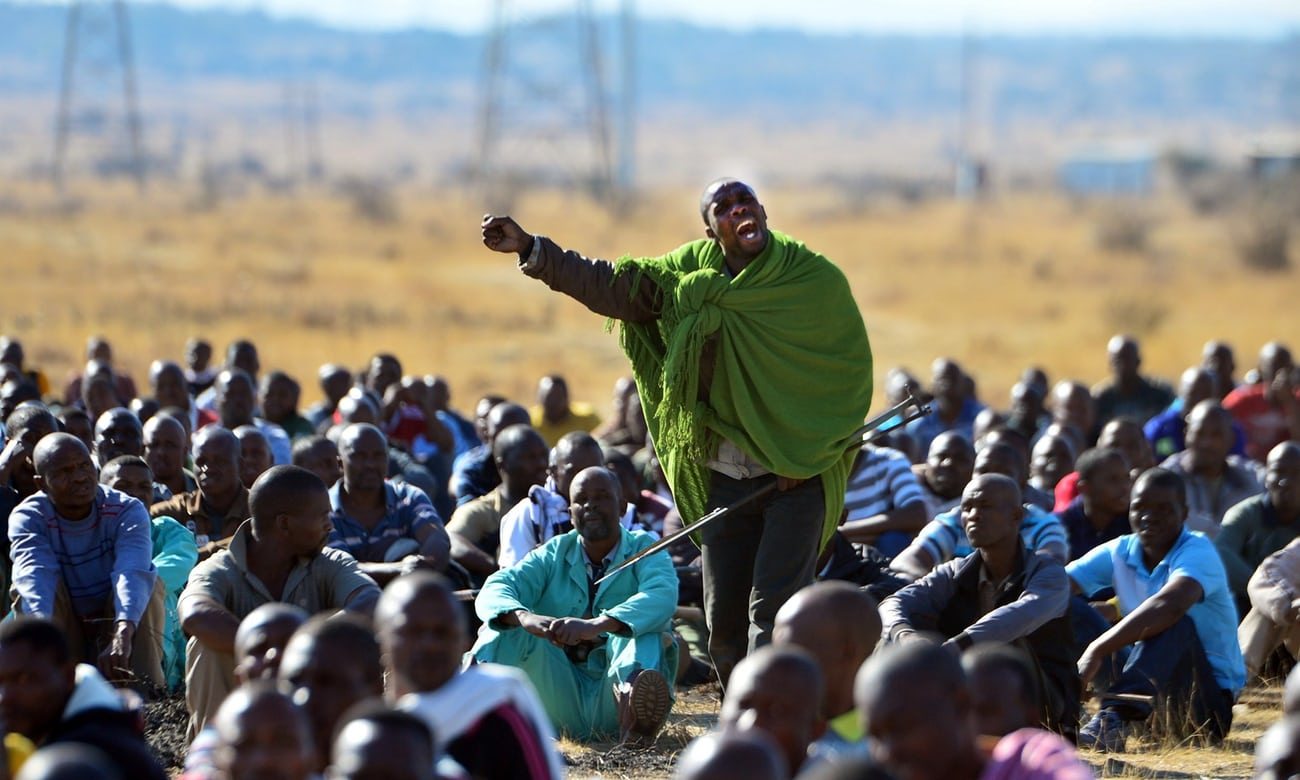The Marikana Massacre is one of two of South Africa’s most gruesome cases of its police using lethal force on civilians. The incident occurred between the dates of August 10 and September 20, 2012, when striking workers at a mine owned by Lonmin in the Marikana area, clashed with police officers, leading to the death of 47 people.
Much of the controversy surrounding the Marikana Massacre was not only the fact that a majority of the victims were not in active confrontation with the police or even close to police lines when they were shot, but that they were also shot in the back. This suggests that they were running from the cops and were being hunted down like animals. Eyewitness reports and an official statement from the police, however, confirmed that the police only reacted after they were shot at by a worker with a shotgun. Some other protesters were found holding other weapons, one of which was found to have belonged to a police officer that was killed a few days before the incident.
The incident gained international following afterward with reports indicating that both the South African Police Service and Lonmin security had participated in the shootings. In addition to the 47 deaths recorded at the end of the ordeal, 78 other workers were also injured.
Reactions to the Marikana Massacre
The President of South Africa at the time of the incident, Jacob Zuma, was in Mozambique during the killings. He was said to have expressed shock and dismay at the violence as he urged trade unions and the government to work together to put the unfortunate event to rest before it spiraled even further out of control.
The day after the incident, he traveled to the location of the Marikana massacre and ordered a formal inquiry into the matter. But despite his supposed distraughtness and declaration of a week of national mourning over the incident, Zuma never actually got himself to apologize to the families of those that lost their lives.
Nosiviwe Noluthando Mapisa-Nqakula, the country’s Defense Minister at the time, was the first official from the South African government to apologize to the miners, stating, “…as a representative of the government, I apologize…I am begging, I beg and I apologize, may you find forgiveness in your hearts.”
The former leader of the African National Congress’ youth wing, Julius Malema, who at the time was suspended from the ANC, condemned the actions of the police. He even called for the resignation of the president, saying: “A responsible president says to the police you must keep order, but please act with restraint. He says to them use maximum force. He has presided over the killing of our people, and therefore he must step down… How can he call on people to mourn those he has killed? He must step down.”
The reactions from the South African media were as to be expected. They showed graphic photos and videos of the shooting. They also used words like ‘Bloodbath’ and ‘Killing Field’ when referring to the incident.

The Resolution
On the 18th of September 2012, the conflict between Lonmin and the mineworkers had reached a resolution with the striking workers accepting a 22% pay increase and a one-off payment of 2,000 rands.
The Marikana Mine strike and subsequent resolution inspired several mine strikes across the country, making 2012 the most protest filled year in South Africa since the collapse of apartheid.
Similar Cases of Police Using Lethal Force
A similar case of South African security forces using lethal force on civilians occurred in 1960 in an incident referred to today as the Sharpeville Massacre. The shootings and death toll of civilians have been compared by the South African media, making them two of the worst incidents in South African history.
The Sharpeville Massacre occurred on the 21st of March 1960, at the Sharpeville police station when a crowd of five thousand to seven thousand black protesters marched and blocked the front of the police station to protest against the Pass Laws; a type of passport system that was designed to marginalize the movement of the black population. This included them carrying passbooks whenever they exited their designated areas or homelands.
After a day of peaceful protests outside the Sharpeville police station, the South African police chose to open fire on the group of protesters, killing sixty-nine people. In honor of the slain protesters, 21st March is celebrated annually as a public holiday, serving as a day of remembrance of the victims of the massacre.
Read Also: South African History: A Quick Review
Additional Literature on the Marikana Massacre
Being one of the most discussed issues of 2012, many articles and books on the Marikana massacre have been written and published. For further reading, lookup:
• Peter Alexander and others: “Marikana. A View from the Mountain and a Case to Answer”, Jacana Media, Johannesburg, South Africa 2012.
• Greg Marinovich: “Murder at Small Koppie”, Penguin, South Africa, 2015.
• Mandy de Waal: “Marikana: What Really Happened? We May Never Know”, Daily Maverick, 2012.
• Greg Marinovich: “Marikana, One Year Later: The Hell Above and Below Ground”, Daily Maverick, 2013.
• Niren Tolsi: “Marikana: One Year After The Massacre”, Mail & Guardian, 2013.
